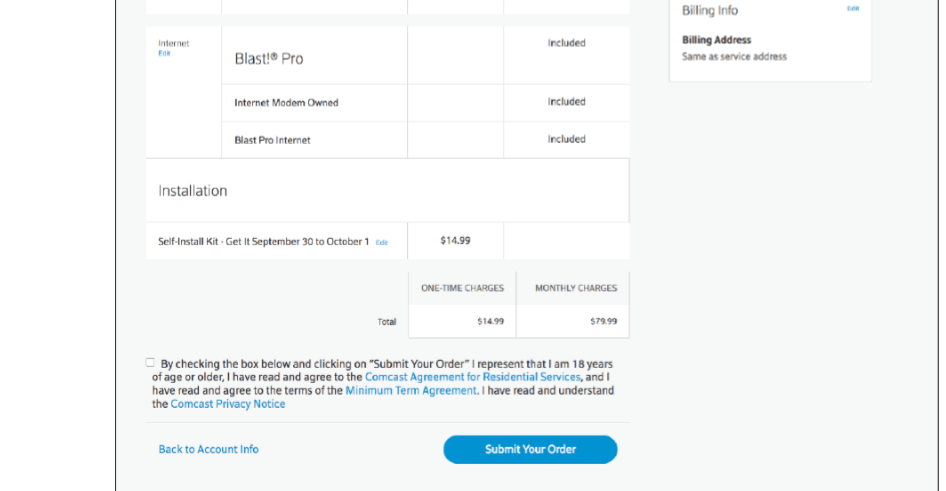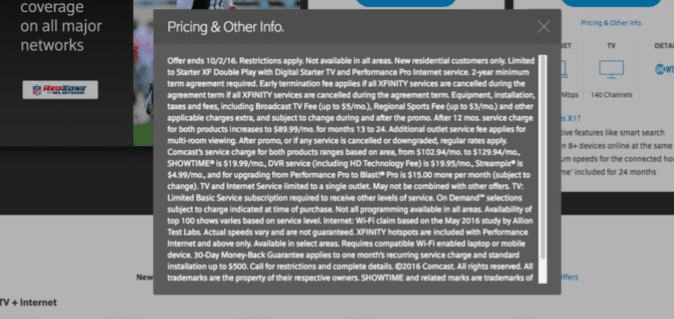Score one for sanity: A federal court judge recently denied Comcast’s request to throw out a lawsuit alleging that the cable company’s “Broadcast TV” and “Regional Sports” fees are just misleading ways to raise customers’ bills without having to increase the advertised price.
Comcast introduced the Broadcast TV fee nearly four years ago, claiming it was needed to help the company recoup the increasing cost of carrying network TV feeds, even though Comcast owns one-fourth of America’s broadcast TV industry. At the time, it was an additional $1.50/month, but now costs many customers at least $6/month.
The Regional Sports Fee followed in 2015. Again, Comcast said this surcharge was vital to helping it recover the high costs of carrying all those regional sports channels, even if many of them have names that begin with “Comcast SportsNet.” By 2016, this $1 monthly fee had mushroomed to $4.50/month.
Between the two fees, which most people have to pay regardless of whether they watch local TV or regional sports channels, that’s an increase of more than $10/month to their bills, but without Comcast having to change the advertised price.
READ MORE: Consumerist’s Guides To The Charges On Your Cable Bill
In Oct. 2016, a group of Comcast customers sued the cable giant, alleging breach of contract and multiple state-level statutory violations.
Comcast has since tried to get the case dismissed, and succeeded in April in getting the non-California plaintiffs removed from the complaint for lack of jurisdiction.
In June, Comcast argued [PDF] that the various agreements a new customer must consent to allow the company to charge these fees, and that they are permissible under federal regulations.
However, one of the two remaining plaintiffs alleged through extensive screen shots of the online ordering process, that Comcast does not include these two fees in any of the prices it shows to new customers. The company does show “Monthly Charges” and “One Time Charges” for things like installation, but the plaintiff claims that the customer is never made aware, until after a bill arrives, of these fees that added more than 10% to the monthly rate of his service.


There is a prompt to read Comcast’s Minimum Term Agreement, but the plaintiff says that when a customer clicks on that link, you only get this pop-up window with a brief description of the agreement (which appears to be primarily about early termination fees) and a promise that it will be mailed to the customer at a later date:

In its motion to dismiss, Comcast tried to make the case that when the plaintiffs submitted their orders they were agreeing to a full suite of contractual terms, but that Comcast was not entering into a contract to only charge the rate given to the customer.
This was not a sufficient argument for the judge, who said Comcast was making assumptions about its agreements that are in fact still up for debate.
“It is plausible to infer from the complaint that, by clicking ‘Submit Your Order,’ [the plaintiffs] agreed to pay Comcast’s advertised price, plus taxes and government-related fees, in exchange for the services Comcast offered them,” wrote Judge Vince Chhabria in his denial of the motion to dismiss [PDF]. “It is also plausible to infer from the complaint that Comcast breached its agreements with the plaintiffs when it sent them bills charging them Broadcast TV and/or Regional Sports Fees (alleged to be neither taxes nor government-related fees) in excess of the agreed-upon price, and when it subsequently sought to raise the amount of the fees.”
The judge pointed to the language highlighted in the first screenshot above, where a little pop-up window describes the Monthly Charges as “This is the base monthly total of all recurring charges for the services you have selected. It does not include tax or one-time charges (such as installation or Pay-Per-View fees) that may appear on individual bills.”
This, notes the court, makes it plausible that a “reasonable consumer would be misled to think that the price of the service will be Comcast’s advertised price, plus taxes, government-related fees, and any one-time installation fees.”
With regard to Comcast’s many user contracts, the 23-page Subscriber Agreement does say that the customer will pay “permitted fees and cost recovery charges,” but the judge takes issue with Comcast’s assertion that it’s a settled matter of law that these two fees, which are not mentioned in the agreement, fall under that category of allowable charges.
The full Minimum Term Agreement [PDF] does detail the specific price of the two fees (though of course they can, and likely will, go up). But as shown in the above screengrab, the plaintiffs say that the Minimum Term Agreement shown during the ordering process failed to include any of this information; it wasn’t obtained until weeks after placing his order. The judge said it’s too early in the legal process to determine if the customer can agree to a contract he may not have been able to see.
Before one actually enters into the purchasing process, Comcast does have yet another pop-up window that includes various pricing information, including specific amounts for these two fees:

But the judge says this was not adequate to argue that the customers hadn’t been misled, particularly in light of the potentially confusing “base price” language that comes later during the official process of making the purchase.
To be clear, the judge isn’t saying that Comcast did anything wrong; just that there are important matters still in dispute. Many of these same issues will be raised when Comcast seeks summary judgment against. Even so, the judge cautioned the plaintiffs that they are unlikely to succeed at receiving any injunctive relief against Comcast, as that would probably need to be sought through a separate state court lawsuit.
[h/t Ars Technica]
Editor's Note: This article originally appeared on Consumerist.
















